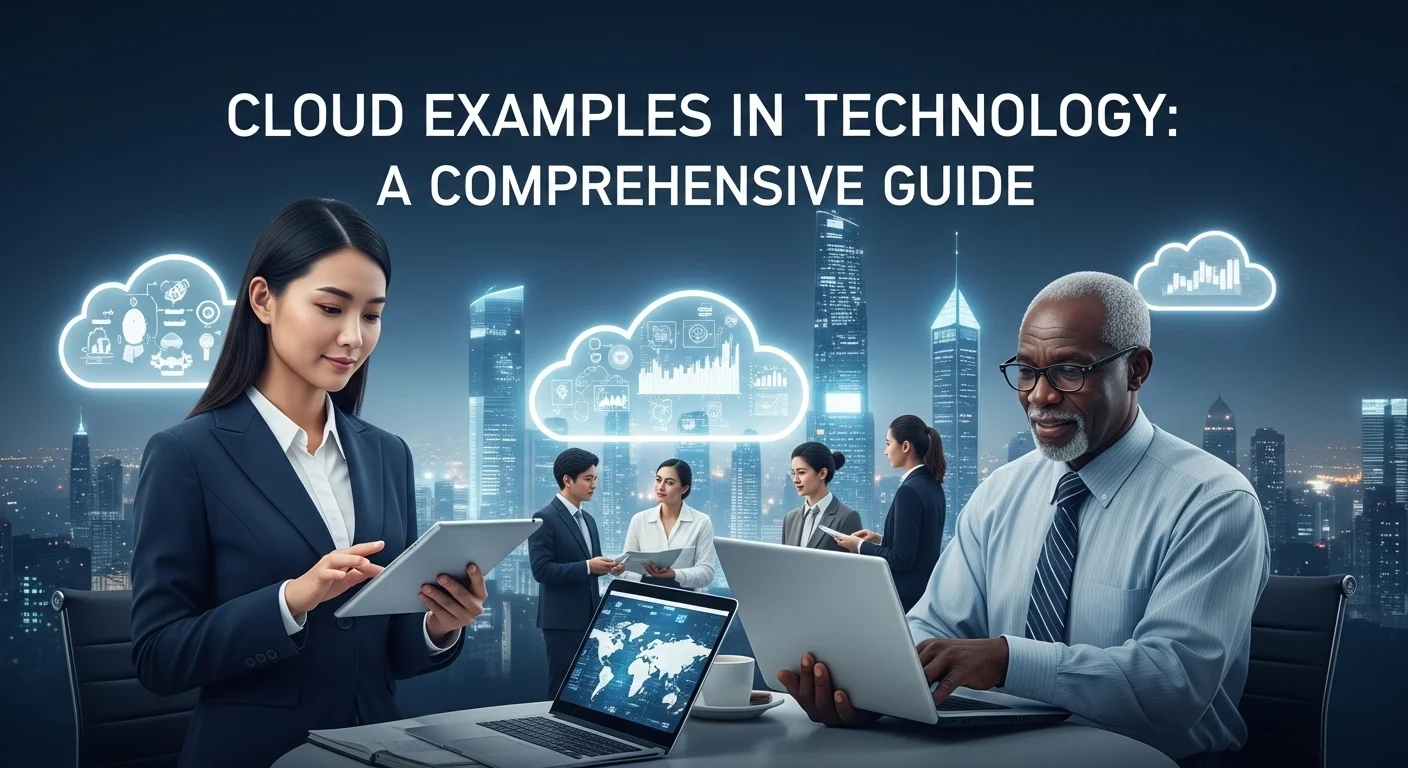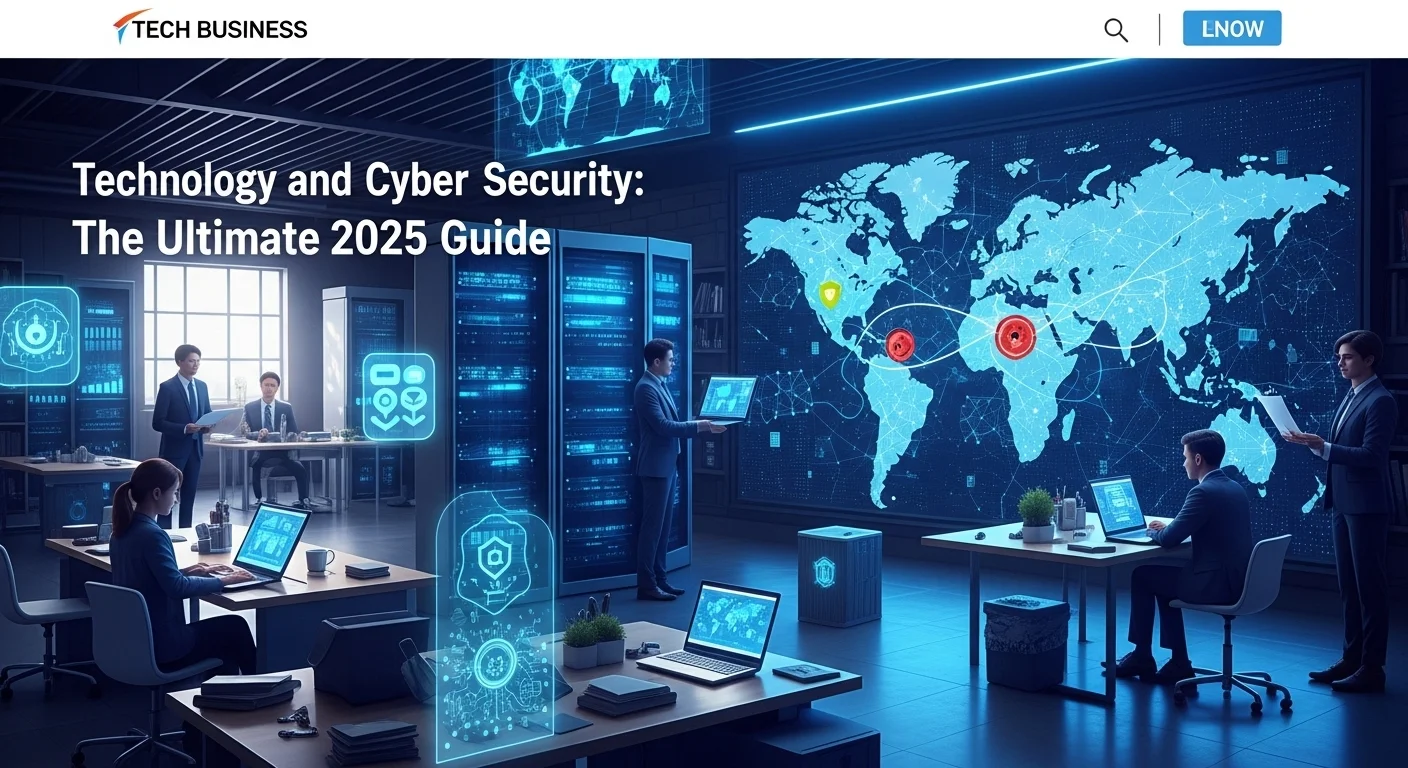Cloud Computing Examples Explained: A Practical Guide for 2024

Executive Summary
I've spent over a decade helping businesses navigate the cloud, and the biggest hurdle is often just understanding what it *is*. It's not some abstract concept in the sky; it's the engine behind services you use every day. This guide is my attempt to cut through the jargon. We'll look at real, tangible cloud examples, breaking down the essential models like Infrastructure as a Service (IaaS), Platform as a Service (PaaS), and Software as a Service (SaaS). We'll also explore how public, private, and hybrid clouds work in practice. My goal is to show you the 'how' and 'why'—how the cloud can bring real benefits like flexibility and cost savings to your project or business, no matter its size.
Table of Contents
Table of Contents
What is Cloud Computing and Why Does it Matter?
Let's get right to it. At its heart, cloud computing is like renting a super-powered computer and its services over the internet instead of buying and maintaining your own. Think of major providers like Amazon Web Services (AWS), Microsoft Azure, or Google Cloud as massive, global landlords of computing power. Instead of spending a fortune on physical servers and hardware (capital expenditure), you can pay for what you use, when you use it (operational expenditure). This shift has been a game-changer, giving businesses incredible flexibility and the ability to scale up or down at a moment's notice. Looking at real-world cloud examples is so important because it makes this technology tangible and shows you the strategic benefits behind the buzzwords.
To really get a handle on the cloud, you need to understand its three main service models. I like to think of them as different levels of 'done for you' service. They are Infrastructure as a Service (IaaS), Platform as a Service (PaaS), and Software as a Service (SaaS). IaaS is the foundation. It provides the basic building blocks: virtual servers, storage, and networking. You get maximum control to manage your own operating systems and applications, while the provider handles the physical data centers. Great cloud IaaS examples are services like Amazon EC2 or Azure Virtual Machines, which are perfect for companies that need total control over their IT setup. Next up is PaaS, which gives developers a ready-made platform to build and run applications without worrying about the underlying servers. It’s like renting a fully equipped workshop instead of just an empty garage. Examples like Heroku or Google App Engine streamline development, which is a huge win. Finally, SaaS is the most familiar model. It delivers ready-to-use software directly to you through a web browser, usually on a subscription. If you've used Salesforce, Microsoft 365, or Dropbox, you've used SaaS. Understanding these models is the first step in finding the right cloud solutions examples for what you need to accomplish.
Beyond the 'what', there's the 'where'. Cloud services are deployed in three main ways: public, private, or a mix of both, called hybrid. The public cloud is the most common model. Here, services are delivered over the internet and resources are shared by many organizations. It’s incredibly cost-efficient and offers massive scale, which is why AWS, Azure, and Google Cloud are so popular. On the flip side, a private cloud is infrastructure dedicated to a single organization. Think of it as your own personal, secure cloud. It offers greater control and security, which is non-negotiable for industries like finance or healthcare. There are many examples of private cloud providers, from giants like Dell and IBM to open-source solutions like OpenStack. Many businesses I've worked with find their sweet spot in the hybrid cloud. This model combines public and private clouds, letting you keep sensitive data secure in a private environment while using the public cloud's power for less critical tasks. For instance, a retailer might use the public cloud for its website to handle holiday shopping spikes but process all customer payments on a secure private cloud. Looking at examples of public cloud and private cloud use cases shows it’s all about a strategic balance of cost, security, and performance.
Finally, none of this works without a solid network. Well-designed cloud network examples are the unsung heroes of good cloud performance and security. A core concept here is the Virtual Private Cloud (VPC). It lets you carve out a private, isolated section of a public cloud, giving you control over your virtual network much like a traditional on-premise setup. Another key piece is the Content Delivery Network (CDN), like AWS CloudFront. A CDN is a smart network of servers around the world that stores copies of your content (like images and videos) closer to your users. When someone in Japan visits your website, they get the content from a server in Asia, not one in North America. The result? A much faster and smoother experience. These cloud network examples show how architecture is designed to deliver fast, secure, and reliable services globally. Honestly, understanding these different cloud examples is no longer just a good idea; it's essential for anyone in tech or business today. It's the roadmap to building better, faster, and more efficient solutions in our digital world.

A Practical Guide to Cloud Solutions and Business Applications
Alright, let's move from theory to practice. Seeing how real companies use the cloud is where the lightbulb really goes on. By looking at specific applications of IaaS, PaaS, and SaaS, and how businesses choose between public, private, and hybrid models, you can start to see a clear path for your own projects. This is my guide to the cloud in action, filled with the kind of insights that help you make smarter decisions.
First, let's look at Infrastructure as a Service (IaaS), the bedrock of the cloud. The most famous cloud IaaS examples are from the big players: Amazon Web Services (AWS), Microsoft Azure, and Google Cloud Platform (GCP). AWS's Elastic Compute Cloud (EC2) is the classic example; it lets you spin up virtual servers in minutes. I've seen startups go from an idea to a global application using EC2, completely bypassing the massive upfront cost of buying hardware. As their user base explodes, they can add more capacity with a few clicks. Microsoft Azure's Virtual Machines offer a similar powerhouse, especially for businesses already using Microsoft products. And Google Compute Engine (GCE) is a strong competitor known for its raw performance. But IaaS is more than just servers. Services like Amazon S3 or Google Cloud Storage provide incredibly durable and cheap storage for everything from website images to massive datasets for analysis. These services are the foundational layer for countless cloud solutions examples we see today.
Climbing up a level, we have Platform as a Service (PaaS), which is a developer's best friend. PaaS removes the headache of managing infrastructure, so coders can just focus on coding. A great PaaS example is Google App Engine, which lets developers deploy their apps and have them scale automatically without ever thinking about load balancers or server patches. AWS has a similar service called Elastic Beanstalk. My personal favorite for its simplicity is Heroku (owned by Salesforce), which makes deploying a web app feel almost magical. These platforms are brilliant cloud solutions examples for any business that wants to innovate and release new features quickly. Imagine your software team building and launching a new product in days instead of months because they didn't have to configure a single server—that's the power of PaaS.
Software as a Service (SaaS) is the cloud model we all interact with every single day. These are finished applications you access over the internet. Google Workspace (with Gmail and Docs) and Microsoft 365 are prime examples of productivity tools that run entirely in the cloud. In the business world, Salesforce changed the game with its cloud-based Customer Relationship Management (CRM) tool, freeing sales teams from clunky, installed software. Other incredible cloud solutions examples in the SaaS world include collaboration tools like Slack, accounting software like QuickBooks Online, and project management apps like Asana. The beauty of SaaS is that it gives any business, big or small, access to powerful, enterprise-grade tools for a simple monthly fee.
The choice of where to deploy—public, private, or hybrid—is just as crucial. Seeing examples of public cloud and private cloud in use really clarifies the trade-offs. The public cloud (like AWS) is perfect for an e-commerce site that needs to handle massive traffic spikes during a Black Friday sale. The site can automatically scale up to meet demand and then scale back down to save money. On the other hand, a hospital handling sensitive patient records would likely choose a private cloud to meet strict compliance and security needs. There are many examples of private cloud providers that specialize in this. VMware is a giant in this space, helping companies build their own secure clouds. For companies that want the best of both worlds, a hybrid cloud strategy is often the answer. I've helped financial firms run their customer-facing apps on a scalable public cloud while processing sensitive transactions on a hyper-secure private cloud. This requires smart networking. Good cloud network examples for hybrid setups often use dedicated connections like AWS Direct Connect to create a private, high-speed link between the company's data center and the public cloud. By studying these diverse cloud examples, from specific cloud IaaS examples to broad hybrid strategies, you can design a technology stack that is secure, scalable, and perfectly aligned with your goals.

Expert Tips for Mastering the Cloud
Harnessing the cloud's full power is more than just picking a provider. It’s about being smart with your strategy. Over the years, I've seen companies make the same mistakes and celebrate the same wins. Here are some practical tips I always share to help you get the most out of your cloud experience, based on countless real-world Cloud Examples.
First, let's talk about money, because if you're not careful, your cloud bill can be a nasty surprise. The key is 'FinOps,' or cost optimization. A basic but powerful strategy is to 'right-size' your resources. So many companies over-provision their virtual machines 'just in case,' paying for power they never use. Use the tools your cloud provider gives you to analyze performance and choose the most cost-effective machine for the job. Another huge money-saver is to shut down resources you aren't using. Development and testing servers don't need to run 24/7. Also, get smart about pricing models. For predictable workloads, using Reserved Instances or Savings Plans can slash your bill by up to 75%. For tasks that can handle interruptions, Spot Instances offer massive discounts by using the provider's spare capacity. A culture of cost-awareness is crucial; when your teams can see what they're spending, they get smarter about how they use it.
Security in the cloud is a shared job. Your provider secures the foundation, but you are responsible for securing everything you put on it. My number one rule is to enforce the principle of least privilege using Identity and Access Management (IAM). Simply put, people and applications should only have permission to do the bare minimum required for their function. Always enforce multi-factor authentication (MFA). When you look at cloud network examples, you'll see that secure design is everything. Use Virtual Private Clouds (VPCs) to create isolated networks and use security groups like a fine-grained firewall to control traffic. Always encrypt your data, both when it's moving (in transit) and when it's stored (at rest). It’s not optional in today’s world.
Choosing between examples of public cloud and private cloud should be a strategic decision based on your specific needs. While the public cloud offers amazing scale, a private cloud provides control that might be necessary for compliance. When looking at examples of private cloud providers like VMware or Nutanix, think about the management overhead and how it fits with your existing setup. In my experience, a hybrid approach is often the most practical. You can use cheap and fast cloud IaaS examples on a public cloud for development, while running your critical production databases on a secure private cloud. If you want to see this in action, the AWS Case Studies page is a goldmine of real-world success stories I often recommend.
Finally, don't just use the cloud to do what you've always done. Use it as a platform for innovation. The top providers offer incredible services that can rocket your business forward. Exploring cloud solutions examples using AI and machine learning is a great place to start. Services like Amazon SageMaker or Azure Machine Learning give you the power to build and deploy sophisticated models without being a data center expert. And look into serverless computing with services like AWS Lambda. This lets you run code without managing any servers at all, which is perfect for creating incredibly scalable and cost-efficient applications. By studying these advanced Cloud Examples and encouraging your team to experiment, you can turn the cloud into a true engine for growth. The journey never really ends, but with a smart strategy, it’s one of the most powerful ones you can take.
Expert Reviews & Testimonials
Sarah Johnson, Business Owner ⭐⭐⭐
As a small business owner, this was a good starting point. I understand the basics of cloud services now, but I would have loved a few more examples tailored to non-tech businesses like retail or cafes.
Mike Chen, IT Consultant ⭐⭐⭐⭐
Solid overview. As an IT consultant, I appreciated the breakdown of IaaS vs. PaaS vs. SaaS. It's a great resource to share with clients who are new to the cloud. A bit more on multi-cloud strategies would have made it perfect.
Emma Davis, Tech Expert ⭐⭐⭐⭐⭐
Fantastic and comprehensive article! I'm studying for my cloud certification, and this cleared up so many concepts for me. The real-world examples really helped connect the dots. Thank you!



